Paul Henry RHA (1877-1958)
Menawn Cliffs and Dooega Head, Achill, and West of Ireland Landscape with Trees
Oil on panel, Double sided, 30 x 38.5cm (11¾ x 15¼")
Both signed
Provenance: Private Collection, Co. Dublin
The present work, a double-sided plywood panel, boasts two signed paintings by Paul Henry
Both works are largely complete, if sketchy, however in the case of the landscape with trees, it’s composition and treatment is more impressionistic than usual. The composition is typical with its diagonal axis, the towering mountains on two planes and the sketchy, almost misty treatment of the middle distance with its resonances of James Whistler, a strong influence on Henry.
The two spindly trees which dominate the scene are elements that appeared in much of Henry’s work over the decades, ranging from his early Achill period to the 1940s. Despite their wiry form the thorn trees can be seen as a metaphor for the resilience of nature, and indeed all forms of life, in the west of Ireland – the lean trunks bowed by the prevailing winds but standing firm in the ground, surviving against so many odds.
The painting on the reverse is a view of the Menawn Cliffs and Dooega Head from near Keel, on Achill Island. A similar view, Cliffs and Sea, (SBK, #323) was identified as Menawn Cliffs by the late S.B.Kennedy and sold in these rooms in 1980 and is dated to 1912 – 15. Not as monochromatic as some of his work of this period, the present work is imbued with rich colours, the pink and white sky, the hulking mass of the cliffs painted in hues of dark blue and umbers, and the white surf modelled with Henry’s signature translucent glazes.
Both paintings in the present lot are likely to have been painted during the artist’s near ten year sojourn in Achill. The impact of Henry’s time in Achill cannot be overstated. It was to Dugort, on the north of the island and at the eastern foot of Slievemore, that Henry went when he first arrived on Achill in August 1910. But even then he found the village busy with tourists. ‘Every second house seemed to be an hotel or boarding house’, he later wrote, and so the morning after his arrival he set off for the much quieter village of Keel, itself positioned south of the mountain, where he subsequently established himself, taking rooms with John and Eliza Barrett who ran the post office in Keel.
Paul Henry RHA (1877-1958)
Menawn Cliffs and Dooega Head, Achill, and West of Ireland Landscape with Trees
Oil on panel, Double sided, 30 x 38.5cm (11¾ x 15¼")
Both signed
Provenance: Private Collection, Co. Dublin
The present work, a double-sided plywood panel, boasts two signed paintings by Paul Henry
Both works are largely complete, if sketchy, however in the case of the landscape with trees, it’s composition and treatment is more impressionistic than usual. The composition is typical with its diagonal axis, the towering mountains on two planes and the sketchy, almost misty treatment of the middle distance with its resonances of James Whistler, a strong influence on Henry.
The two spindly trees which dominate the scene are elements that appeared in much of Henry’s work over the decades, ranging from his early Achill period to the 1940s. Despite their wiry form the thorn trees can be seen as a metaphor for the resilience of nature, and indeed all forms of life, in the west of Ireland – the lean trunks bowed by the prevailing winds but standing firm in the ground, surviving against so many odds.
The painting on the reverse is a view of the Menawn Cliffs and Dooega Head from near Keel, on Achill Island. A similar view, Cliffs and Sea, (SBK, #323) was identified as Menawn Cliffs by the late S.B.Kennedy and sold in these rooms in 1980 and is dated to 1912 – 15. Not as monochromatic as some of his work of this period, the present work is imbued with rich colours, the pink and white sky, the hulking mass of the cliffs painted in hues of dark blue and umbers, and the white surf modelled with Henry’s signature translucent glazes.
Both paintings in the present lot are likely to have been painted during the artist’s near ten year sojourn in Achill. The impact of Henry’s time in Achill cannot be overstated. It was to Dugort, on the north of the island and at the eastern foot of Slievemore, that Henry went when he first arrived on Achill in August 1910. But even then he found the village busy with tourists. ‘Every second house seemed to be an hotel or boarding house’, he later wrote, and so the morning after his arrival he set off for the much quieter village of Keel, itself positioned south of the mountain, where he subsequently established himself, taking rooms with John and Eliza Barrett who ran the post office in Keel.

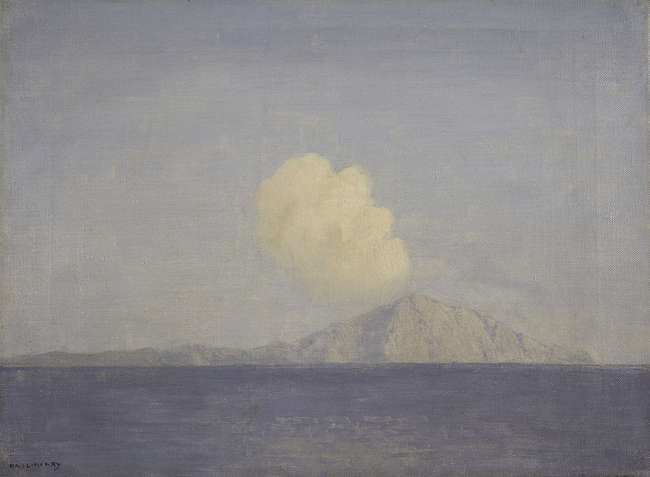

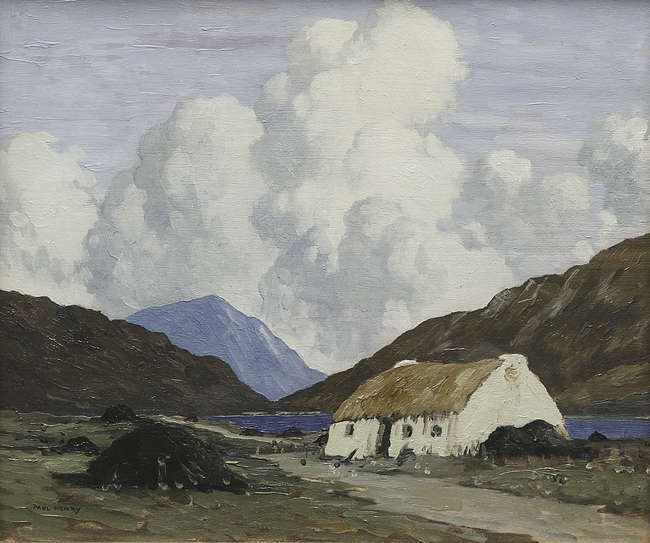
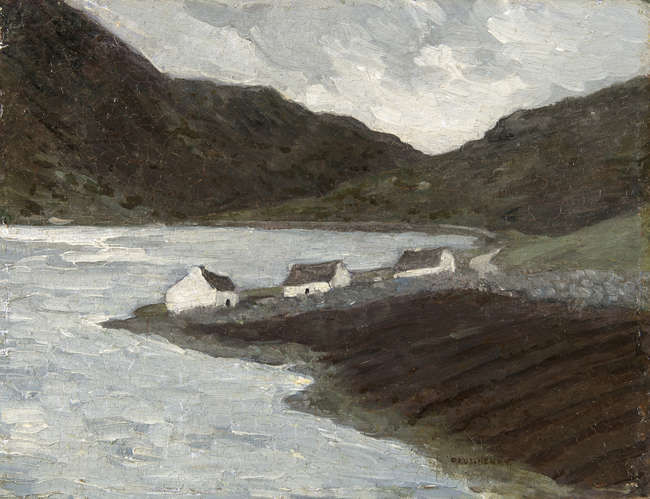
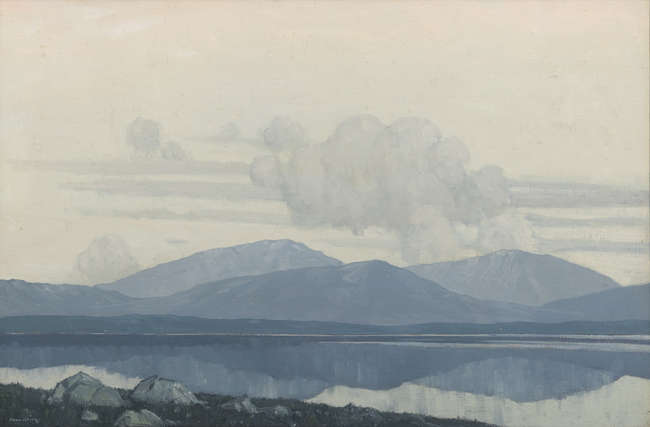
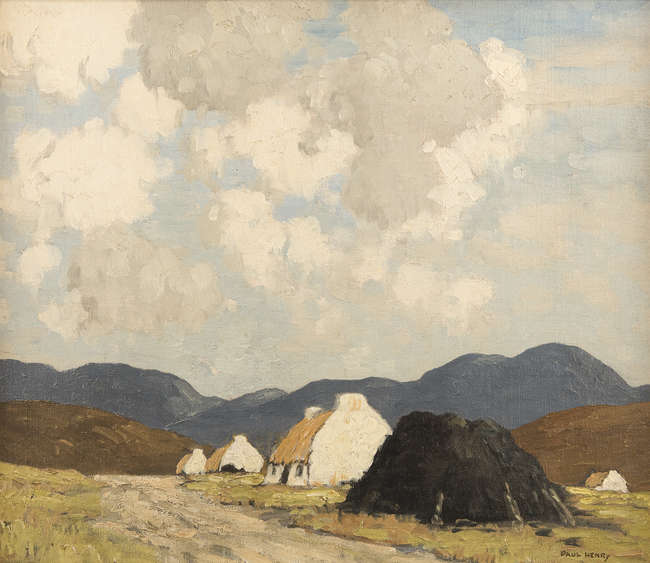

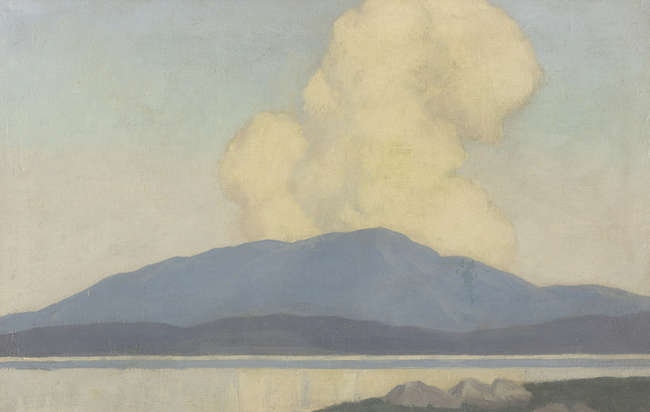
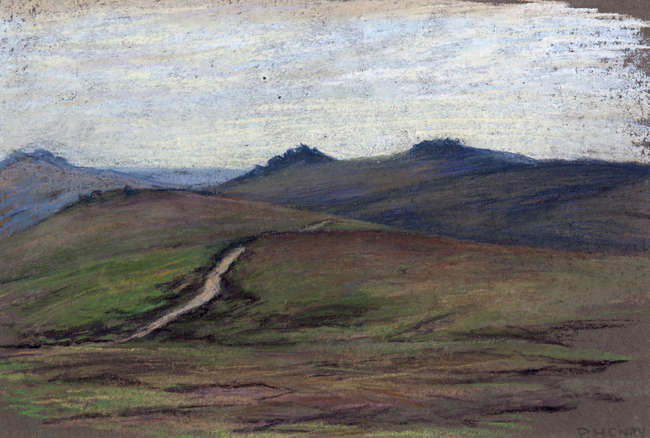
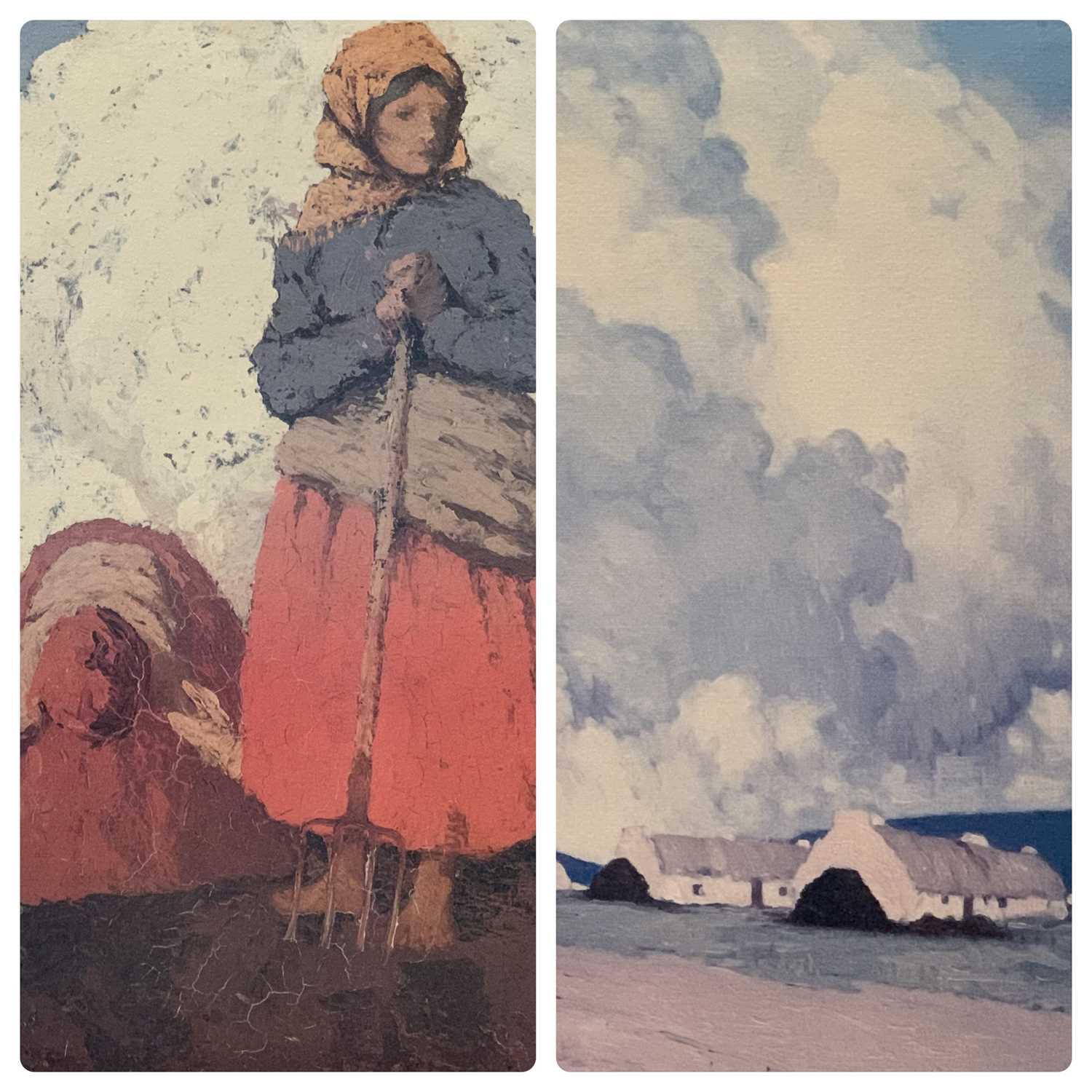

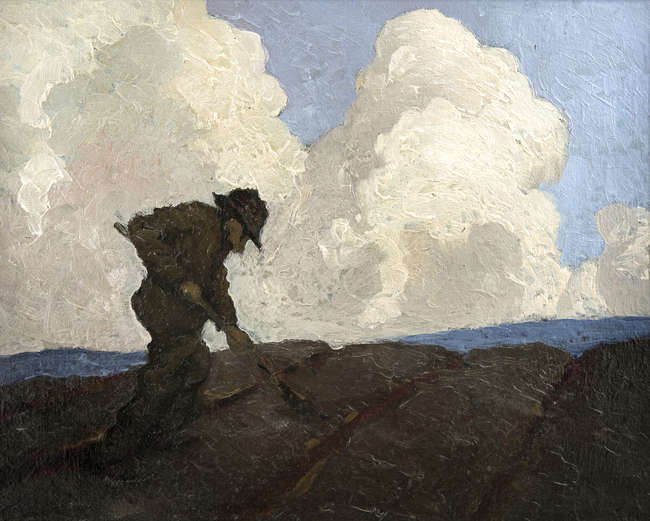

Testen Sie LotSearch und seine Premium-Features 7 Tage - ohne Kosten!
Lassen Sie sich automatisch über neue Objekte in kommenden Auktionen benachrichtigen.
Suchauftrag anlegen